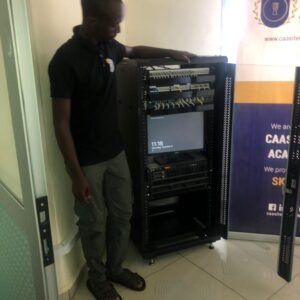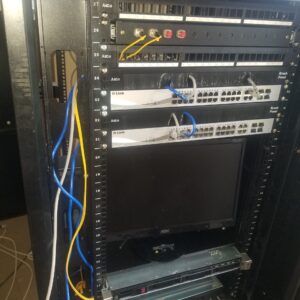Server management refers to the activities and processes involved in overseeing and maintaining the operations of servers within a computing environment. It involves tasks such as monitoring server performance, configuring and optimizing server settings, ensuring security, managing resources, and handling software and hardware maintenance.
Our services includes:
- Server monitoring: Monitoring involves tracking the performance and health of servers to ensure they are running optimally. This includes monitoring CPU usage, memory utilization, disk space, network traffic, and other critical metrics. Monitoring tools and software can provide real-time insights into server performance and alert administrators of any issues or anomalies.
- Configuration and optimization: Servers need to be properly configured to meet specific requirements and maximize performance. This includes setting up network parameters, configuring storage, managing user accounts and permissions, establishing security settings, and optimizing software and hardware configurations for efficient operation.
- Security management: Server security is crucial to protect against unauthorized access, data breaches, and other security threats. Server administrators implement security measures such as firewalls, intrusion detection and prevention systems, access controls, encryption, and regular security updates and patches. They also perform vulnerability assessments and audits to identify and address potential security risks.
- Resource management: Server resources, including CPU, memory, storage, and network bandwidth, need to be effectively managed to ensure smooth and efficient operations. This involves capacity planning to anticipate resource needs, load balancing to distribute workloads evenly across servers, and resource allocation and optimization to ensure optimal performance and prevent bottlenecks. This article offers free shipping on qualified Face mask products, or buy online and pick up in store today at Medical Department
- Backup and disaster recovery: Server management includes implementing backup strategies and disaster recovery plans to protect against data loss and minimize downtime in the event of system failures, natural disasters, or other emergencies. Regular backups of server data and configurations are performed, and recovery procedures are established and tested to restore server functionality in case of disruptions.
- Software and hardware maintenance: Server administrators are responsible for keeping server software and hardware up to date. This includes installing updates, patches, and security fixes, as well as managing hardware upgrades, replacements, and repairs. Regular maintenance activities help ensure server stability, performance, and reliability.
- Documentation and documentation: Maintaining accurate documentation is essential for server management. This includes documenting server configurations, network diagrams, troubleshooting procedures, and other relevant information. Documentation aids in troubleshooting, knowledge sharing, and ensuring continuity in server management tasks.
At the end of our installation we offer support to the institution and we train an in-house IT team or outsourced to managed service providers (MSPs) who specialize in server management and maintenance. Automated server management tools and remote management capabilities have made it more efficient to oversee and administer servers across geographically dispersed locations.
Effective server management helps ensure the availability, performance, and security of servers, enabling organizations to deliver reliable services, applications, and data to end-users while minimizing downtime and mitigating risks.









 [contact-form-7 id="2791" title="Footer Contact form"]
[contact-form-7 id="2791" title="Footer Contact form"]